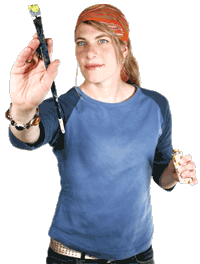At HomeQuestionsAnswered, we're committed to delivering accurate, trustworthy information. Our expert-authored content is rigorously fact-checked and sourced from credible authorities. Discover how we uphold the highest standards in providing you with reliable knowledge.
What is Etched Glass?
Etched glass is the result of intentional and often artistic carving of the surface of glass to leave a white, frosted finish. This technique is used to create designs on the glass. Etched glass can be found in a wide variety of decorative contexts, including glass doors and windows, furniture, wine bottles, and serving dishes such as glass platters. The skill of the artisan etching the glass will determine the quality and detail of the resulting piece.
There are three ways to create a piece of etched glass: sandblasting, chemical etching, and acid etching. Sandblasting is the act of shooting an abrasive material, such as sand, at a piece of glass. The abrasive scratches the glass surface, creating the frosted look. Sand, silicon carbide, and aluminum oxide, are all used as abrasives, however care needs to be taken when sandblasting. Inhaling dust caused by etching is dangerous. Sand dust especially is unsafe to breathe and can cause a potentially fatal lung disease called silicosis.

Etched glass is created by cutting a design stencil that is made of an abrasive resistant material, such as vinyl or rubber. The resulting stencil is called a resist. The resist is then secured onto the glass to be etched. A blaster gun, powered by an air compressor, is used to bombard the glass with the abrasive. Every part of the glass that is not covered by the resist will take the frosted effect while the parts protected by the resist will remain clear, thus producing a piece of etched glass.
There are three other types of sandblasting techniques: Carving, shading, and surface etching. Surface etching scratches the surface of the glass producing a 2D effect. The artisan can also carve into the glass producing a 2D or 3D effect, depending on the particular carving technique used. When shading, the surface of glass is blasted in such a way as to cause varying degrees of white in the design. A combination of all three techniques can also used.
Chemical etching is another way to produce etched glass and is normally what is found in glass etching kits. Just as in sandblasting, a stencil is used to protect the glass where the etching effect is not desired. Instead of an abrasive, however, a chemical cream is applied to the glass. It is this etching cream that produces the final frosted effect. Acid etching uses a acid resistant material to cover areas of the glass that the artist wants protected. Hydrofluoric acid is then applied to the glass to produce the design.
AS FEATURED ON:
AS FEATURED ON:










Discuss this Article
Post your comments